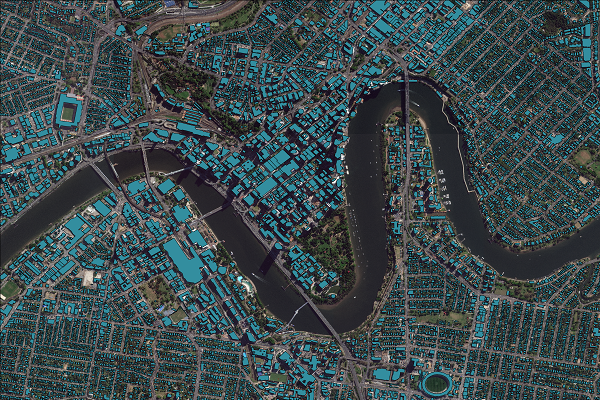Geoscape buildings and addresses data now available on demand

Geoscape, location and geographical data, is now readily available on demand and is a trusted source of location data for the entire country and small areas of demand. Announced by PSMA Australia, it serves architecture, engineering and construction companies.
The data maps every building with a roof greater than 9m² and every physical address including 15,421,158 buildings and 14,718,218 addresses. Geoscape data includes elevation, height, roof materials, nearby trees, solar panels (1,144,268) and swimming pools (1,089,285) in urban areas.
Land and tree cover is mapped across the Australian continent’s 7.6 million km².
It describes Australia’s economically important infrastructure. It includes buildings, addresses, planning zones, transport networks and more. Businesses can request any of the Geoscape data they require on a project-by-project basis.
“We’re bringing the power of location to every organisation. Geoscape data is used to make evidence-based decisions, increase business efficiency and improve customer experience,” PSMA Australia chief executive Dan Paull says.
“Engineering firms use the data for noise and wind modeling, saving time and money on previously manual processes.”
One of the first to take advantage of this new data, engineering firm GHD was able to save 50% on the cost of noise modeling.
“The data is ready to go,” GHD senior engineer in acoustics and vibration modeling, Pri Pandey says.
“We don’t need to do any manual adjustments. Historically, we had to manually assign heights and conduct spatial filtering to ensure data was up to the standard needed for the modeling. Now we have it all in one package – with heights, addresses and planning zones all part of the one Shapefile. And this allows us to insert the data directly into the model.”
WindTech, an analyst and modeler of wind effects, used Geoscape’s data with its projects.
“It was easy to see Geoscape had the specific geographical and building data we needed and the pricing, file formats and delivery processes were all clearly communicated,” WindTech project engineer Marcel Bray says.
“It was quite clear the product would integrate into our processes easily and effectively.”
